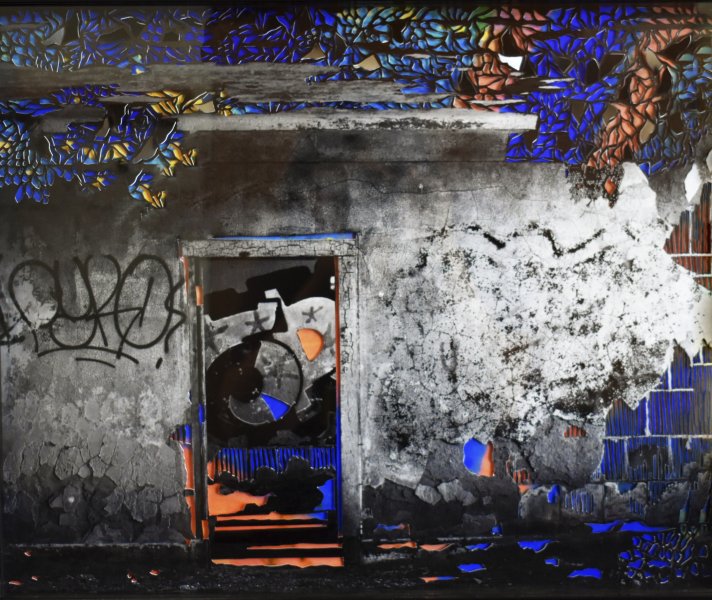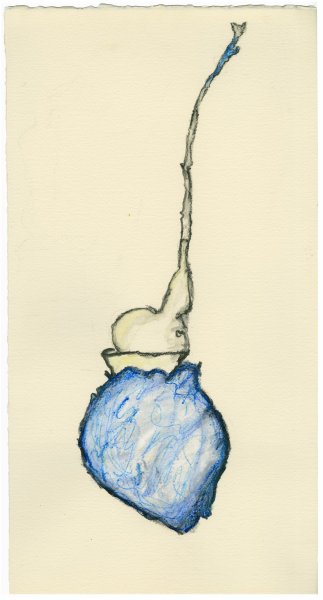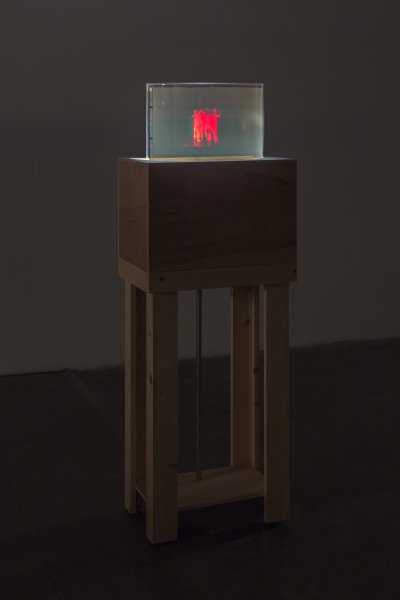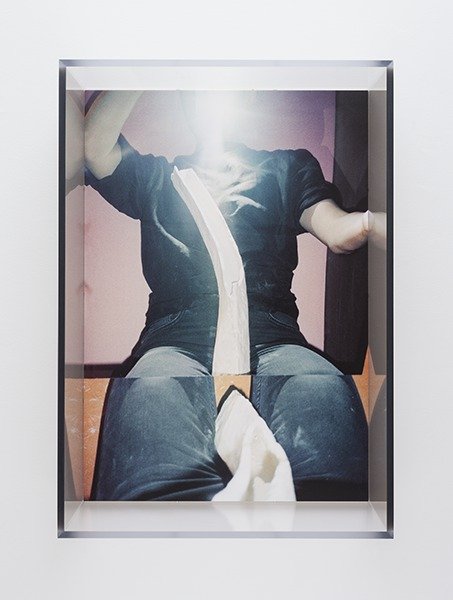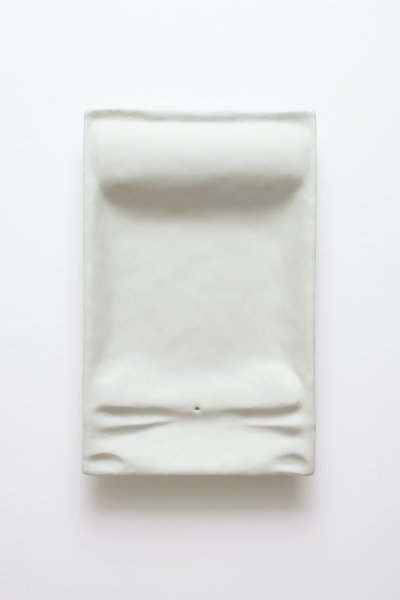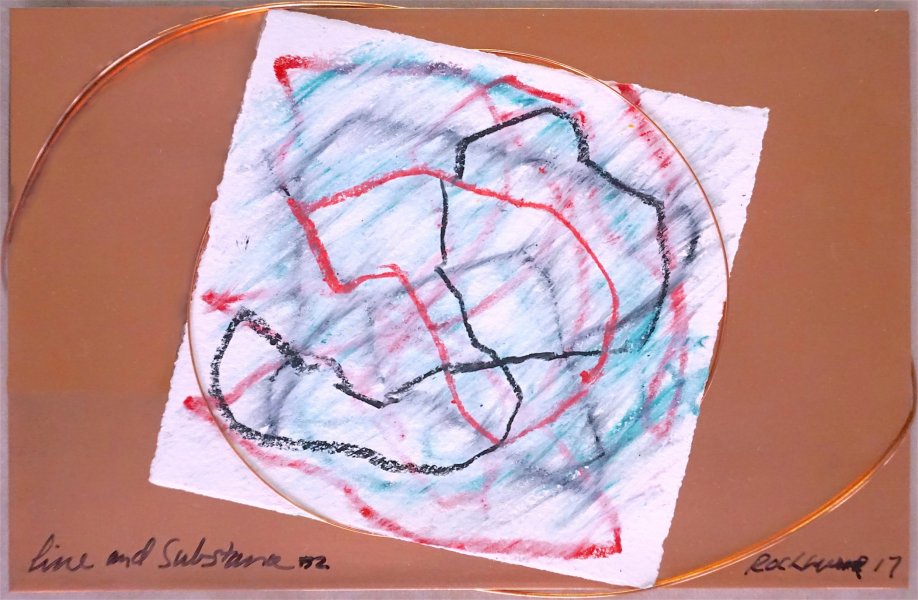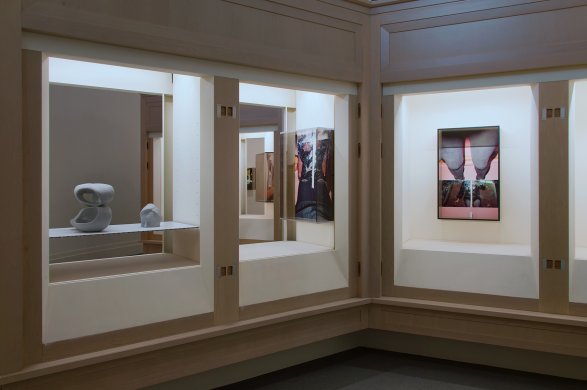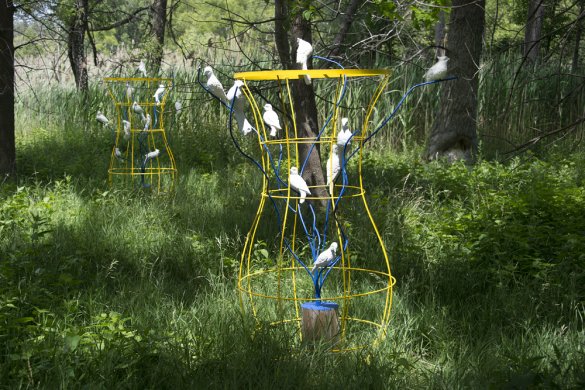On the occasion of Women’s History Month, and in conjunction with the National Museum of Women in the Arts’ fifth annual #5WomenArtists campaign, we're highlighting five women artists associated with the Albright-Knox each week this month. This week we focus on artists whose works were recently added to our collection.
For artist Kari Achatz, “if we look, instead of just see, we can find beauty and wonder” in spaces like those in the background of Parsing Dreams and Urban Resurgence. Achatz began the process of making these works by photographing the Buffalo Central Terminal and abandoned grail silos on the city’s waterfront. She then “draws with the blade”: cutting intricate patterns into and adding dazzling color to each print.
For artist Roberley Bell, “Drawing is a means of thinking out loud—a way to begin where something doesn’t exist.” Using watercolor pencils and pastels, Bell begins to imagine combinations of color and shape, natural and abstract, that may ultimately emerge in three-dimensions in her sculptures and site-specific public projects, including Locus Amoenus, a 2016 AK Public Art installation at Tifft Nature Preserve. The Albright-Knox acquired Bell's drawing #11 from the series Finding Form, 2018, in 2019.
Simone Forti was better known as an avant-garde dancer and choreographer when, in the mid-1970s, she was offered the opportunity to work with Lloyd G. Cross, a physicist and the inventor of moving holographs. Their collaboration resulted in a series of innovative sculptures including Harmonics (3). The softly flickering image is a composite of frames selected from film of Forti performing her iconic improvisatory gestures, a process that introduced “glitches” that occasionally transform the artist’s body into new and unexpected abstract forms.
In her photographic practice, B. Ingrid Olson documents her body as it shifts in relation to her studio surroundings and the camera lens. She achieved the dizzyingly fragmented imagery of Perimeter of Two and One by carefully manipulating mirrors and light sources to double, mask, and distort her likeness. It features the kind of object Olson thinks of as one of her “prosthetics”: sculptural creations based on found materials. For example, she layered a cast of pressed and formed plywood packing material with epoxy putty and paint to transform the object into the marshmallowy torso of Midriff Hrif. Both of these works were included in Olson's first solo museum exhibition, held at the Albright-Knox in 2018.
“When one is dealing with art and mathematics,” artist Dorothea Rockburne has commented, “there is always an element of magic.” Since the early 1970s, Rockburne has worked at the unlikely intersection of art and mathematics, painting, drawing, cutting, and folding complex abstractions out of industrial materials, such as tar, carbon paper, and copper, often paired with more natural substances, such as canvas, paper, and chipboard. The Albright-Knox acquired Rockburne's drawing Line and Substance, 2017, in 2018.


